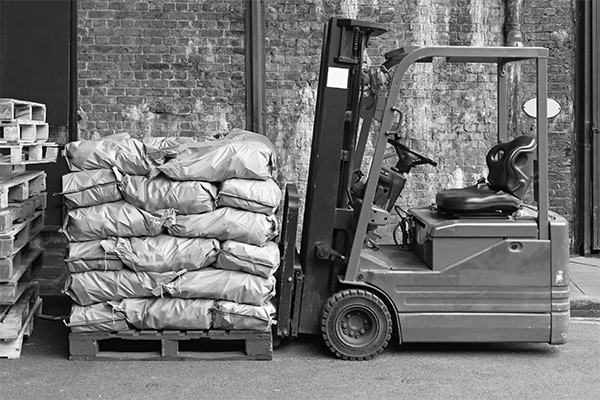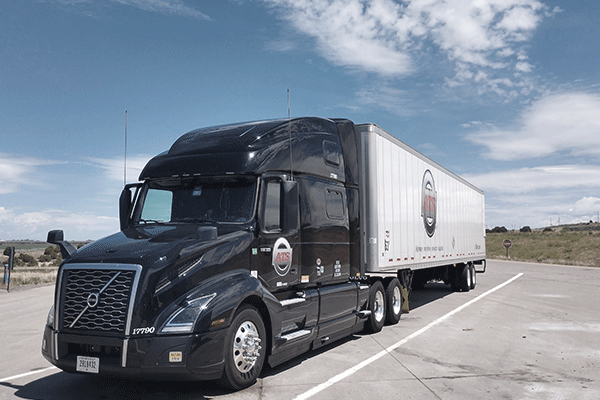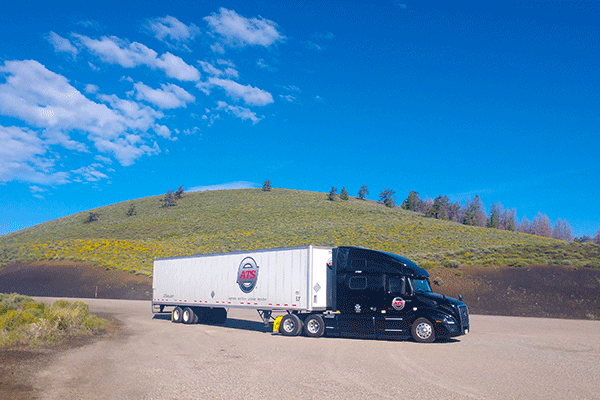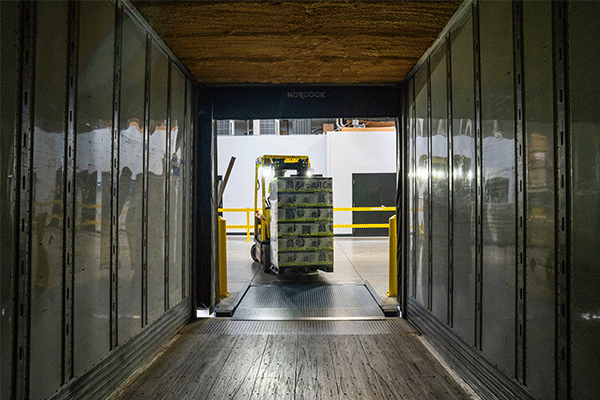
If you’ve recently used less-than-truckload or partial-truckload transportation services for your freight, you’re probably wondering why the transit timing for these shipments is so hard to predict, especially at the time of pick up.
This can be extremely frustrating especially if you consider that your full-truckload shipments frequently arrive quicker than these other shipping services. Why does this happen though? It seems backward, if anything a truck fully loaded with your freight should have a longer transit time than one that has less to move . . . right?
Like everything else in this industry, the more you’re able to understand these methods for shipping smaller amounts of freight and what influences their transit timing, the better.
Here at ATS, we’ve offered all three of these services for years so we know exactly how and why transit timings are so varied between them.
By the end of this blog, you’ll have a better understanding of why transit timing varies so much between these three shipment options so that you can better plan out your next load.
⬇️ Listen To The Podcast On This Topic ⬇️
Check out more listening options >
What is Less-Than-Truckload (LTL) Shipping?
Less-than-truckload (LTL) shipping is a freight transportation service used by shippers around the world. For the most part, this method of shipping freight is used when shippers have as little as a single pallet of inventory to move from A to B.
When this is the case, a company works with a transportation partner to put their product onto a truck that’s transporting goods from other businesses with similar capacity requirements. These businesses are then left sharing trailer space as it goes from pick up location to drop off location with plenty of stops in between.
Since the purpose of LTL services is to provide a solution for companies that don’t need the full capacity of a truck, there are a couple of criteria that must be met for a load to qualify. First, any load serviced by an LTL carrier can be no more than 11-12 pallets in quantity or take up 24 feet of space on a 53-foot trailer. Additionally, inventory transported with an LTL carrier cannot weigh more than 20,000 total pounds.
Because of the nature of LTL shipping, anything exceeding these criteria qualifies for —and is better served by — partial-truckload shipping.

What Dictates Less-Than-Truckload Freight Transit Time?
When you choose to ship your freight using LTL capacities you’re agreeing to share trailer space with other interested parties. As such, the carrier servicing your freight has also booked other loads to completely fill their trailer and maximize their hours of service (HOS).
Because there’s no limit to the number of stops a carrier can make when filling their trailer to capacity, there’s no guarantee of when your freight’s pickup/delivery timing will be scheduled for. For the most part, as soon as your truck shows up and your freight is loaded, its transit timing is out of your control.
Here is an example scenario to give you a better understanding of how LTL transit timing is dictated:
Dean has one pallet of computer mice that he needs to move from Frankfort, Kentucky, to his customer in Indianapolis, Indiana. Dean knows that this trip — when done continuously from A to B — takes about two and a half hours.
Two days after Dean requests a truck for his pallet, it shows up. This is a truck that has already been loaded with other freight and needs to be rearranged in order to comfortably — and safely — fit Dean’s computer mice. After half an hour of loading, during which time the other freight in the LTL truck is shifted to make room, Dean’s freight — now fully loaded and secure — takes off down Interstate 65 toward Indianapolis.
The LTL carrier servicing Dean’s freight has 5 other shippers utilizing its capacity as well. Each of these shippers has an endpoint along the route from Frankfort to Indianapolis as follows:
- Louisville, Kentucky
- Scottsburg, Indiana
- Crothersville, Indiana
- Columbus Indiana
- Franklin, Indiana
Each of these businesses have their own priorities, deadlines, customers and supply chains. As such, each of these businesses receive their freight as the truck passes through their destinations which lengthens Dean’s transit timing.
Finally — after all the other shippers' freight has been delivered, Dean’s pallet of computer mice shows up for delivery at his receiver — a local high school in Indianapolis, 2 days after its departure. Since this high school closes at 5 p.m. there’s no one around to receive the pallet when it shows up at 6 p.m.
The fact that Dean’s receiver wasn’t available throws a further wrench into his delivery plans as the LTL carrier continues with business as usual — picking up freight in the Indianapolis area. As a result, Dean’s computer mice aren’t delivered until the end of the day on Monday, nearly a week after he requested shipping capacity in the first place.
What Does Dean’s Scenario Tell Us About LTL Shipment Transit Time?
Dean’s predicament sums up the transit timing elasticity that stems from LTL shipments. It’s difficult to predict when a shipment will show up and — if the receiver closes at a certain time — matching schedules can be difficult.
For this reason, it’s important that when utilizing LTL shipping capacities, the delivery timing of your shipment won’t break your relationships or damage your bottom line. Since LTL carriers are servicing many different loads from many different locations, guaranteed transit timing is impossible.
If you’re a shipper who has limited capacity requirements like Dean’s, there’s one surefire option available. Sprinter Vans are a great alternative method for transporting small quantities of freight short distances. In Dean’s case, a sprinter van would’ve given him far more reliable transit timing as his freight is transported the 2.5 hours to Indianapolis without stopping.
If you’re a shipper who needs LTL capacity and more control over your delivery timing, ask your transportation provider about whether a sprinter van would be a good fit for your shipment.
Related: How to Ship Less-Than-Truckload (LTL) Freight: A Step-By-Step Guide
What is Partial-Truckload (PTL) Shipping?
Partial-truckload shipping is another common option employed by shippers across industries. There are three key factors that draw the line between LTL and PTL shipments.
1. Amount of Freight Capacity Needed
The amount of capacity needed to qualify for PTL shipping capacity is any freight that’s gross weight rests between 7,000 and 27,500 points. PTL capacity becomes most cost-effective for shippers who need to transport 8-18 pallets of freight and don’t want to book out an entire dry van or flatbed trailer.
2. Amount of Product Handling
Unlike LTL shipping, when moving freight using PTL solutions your load isn’t removed once it’s secured to the trailer until it reaches its destination. Since PTL carriers are splitting trailer space between fewer parties, they’re better able to plan picks/drop-offs and therefore allocate sections of their trailer to each load.
This trailer segmentation leads to far less handling of freight which cuts down on the likelihood that freight is lost or damaged while in transit.
3. Visibility of Freight Touch Points
When you book a shipment with an LTL carrier, the number of stops that your freight may have to endure during transit is always in flux. Shipments can sometimes pop up that LTL carriers will find room for, and service, on short notice.
This is not the case when using PTL capacities. These types of shipments provide far greater tracking visibility since there are only a couple of locations on their manifest. As such, using partial-truckload solutions for your freight provides far greater visibility of where your freight will be and when.
What Dictates Partial-Truckload Freight Transit Time?
As a general rule of thumb, you should plan to budget for three days of flexibility on both ends of your freight’s pick-up when using PTL capacities. Although partial-truckload shipments are easier to predict than LTL shipments, it’s still impossible to pinpoint the exact transit timing for PTL shipments.
Note, as soon as your shipment is picked up, it’s transported to the locations of the other loads heading in the same direction. For this reason, if delivery timing is urgent, you must route your shipment using another service.
Related: Partial Truckload (PTL) vs. Less-Than-Truckload (LTL) Shipping: A Head-To-Head Analysis

What is Full-Truckload (FTL) Freight Shipping?
The final method of freight transport that we’ll outline in this blog is full-truckload, or FTL, shipping. As you may suspect, FTL shipping is a form of freight transportation where a shipper utilizes the entire capacity of a trailer.
Doing so allows shippers who need all 48-53 feet of trailer capacity the ability to control their freight transit timing better. Since their freight is the only shipment occupying the truck, tight schedules are easier to maintain and visibility is excellent.
The transit timing of FTL shipments is by far the easiest to predict.
This is directly tied to the fact that shippers don’t need to wait for other pickups and drop-offs to occur. With FTL shipments — although at a heightened pricepoint — freight is serviced on time and at a shipper’s convenience. This is especially the case when working with a reliable transportation provider who makes each shipper's needs a priority.
How to Know What’s Best For Your Shipment?
There are large discrepancies between when each of these freight movement options should be used. To give you an easier way to visualize this, check out the quick guide below to reference in the future:
LTL, PTL, FTL Comparison Chart
| Less-Than-Truckload | Partial-Truckload | Full-Truckload | |
| Weight Capacity Needed | 100 - 10,000 | 8,000 - 27,500 Pounds | 28,000 - 48,000 Pounds |
| Number of Pallets | 1 - 12 Pallets | 8 - 18 Pallets | 18 - 24 Pallets |
| Number of Trailer Feet | No More Than 24 Feet | 20 - 40 Feet | 53+ Feet |
| Transit Timing Control | None | Low | High |
| TouchPoint Visibility | None | Low | High |
Note, although it’s possible to get your freight onto an LTL carrier at 12 pallets, 10,000 pounds and 24 feet, it’s often more feasible to use a PTL carrier when this larger capacity is needed. Additionally, 18 pallets that weigh 25,000 pounds and take up 40 feet of truck space, although technically transportable using PTL capacity, may be better served using full-truckload instead.
All of these decisions are made easier when partnering with a seasoned freight transportation provider who has a history of answering their customer’s questions and delivering their freight on time.
You’re ready to continue your shipping journey now that you have a better understanding of why transit timing is so varied when comparing LTL, PTL and FTL shipments due to:
- The number and frequency of stops
- The number and frequency of your freight is handled
- The visibility of touchpoints following your freight’s departure
Your next step is to read this blog where we take a look at the top 5 problems people encounter when working with freight brokers and how to avoid partnering with a bad one. This will give you better insight into what to look for when selecting a transportation provider.
If you’re wondering how ATS can help to meet your shipping capacity requirements or are simply looking for further guidance, let’s talk.





